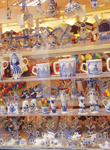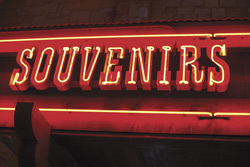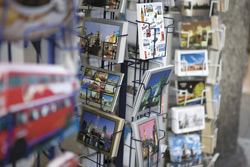By IvyLee Rosario
 Expanding your retail merchandise always comes with the same set of questions: what do I want to sell next and how do I begin selling those items? In order to assist our readers in reaching their highest selling potential, Independent Retailer created a monthly series called “Beyond Your Lines.” Here we provide you with the best tips from experts in their selling categories on how to grow your business, what to expect from the merchandiser and what they will require from you, to ensure an effective and efficient exchange. Continuing our segment will be Donna Steakley, Director of Tourism for the Fossil Rim Wildlife Center, who will shed some light on what it takes to begin selling our fourth category item: souvenirs.
Expanding your retail merchandise always comes with the same set of questions: what do I want to sell next and how do I begin selling those items? In order to assist our readers in reaching their highest selling potential, Independent Retailer created a monthly series called “Beyond Your Lines.” Here we provide you with the best tips from experts in their selling categories on how to grow your business, what to expect from the merchandiser and what they will require from you, to ensure an effective and efficient exchange. Continuing our segment will be Donna Steakley, Director of Tourism for the Fossil Rim Wildlife Center, who will shed some light on what it takes to begin selling our fourth category item: souvenirs.
Getting Started:
The topic of souvenirs may seem broad, but this way it will give you a chance to really think about what kinds of souvenirs should be sold at your specific store. From key chains and postcards to magnets and figurines, the category of souvenirs is not a simple one. So, with the help of our expert, the must know information on selling souvenirs will be right at your fingertips. There are several ways of going about purchasing new merchandise, but take into account these tips while growing your store.
Start with a few products at a time, says Steakley, that way you can keep an eye out for what is selling and can learn more about your customers in the process. In addition to watching what products sell, make it easier for customers to get these items by offering what they want. “Impulse items placed strategically at the registers will usually go first. Start with something small: mints with your location, water bottles, something most people want or think they need.”
 When searching for a reputable supplier, make sure you ask other buyers for advice. “I cannot stress that enough. When meeting other buyers do not consider them competition, consider them a resource,” said Steakley. A lot of suppliers will offer a guarantee sale, so when looking at return policies see if you can get the company to do a 90-day trial. If you fear that your store may get stuck with non-selling merchandise, Steakley suggests saving room in the budget for markdowns. “No one is perfect, we all make mistakes, but we also have had great success by thinking outside of the box.”
When searching for a reputable supplier, make sure you ask other buyers for advice. “I cannot stress that enough. When meeting other buyers do not consider them competition, consider them a resource,” said Steakley. A lot of suppliers will offer a guarantee sale, so when looking at return policies see if you can get the company to do a 90-day trial. If you fear that your store may get stuck with non-selling merchandise, Steakley suggests saving room in the budget for markdowns. “No one is perfect, we all make mistakes, but we also have had great success by thinking outside of the box.”
Mistakes to Avoid:
There will always be common mistakes and misconceptions retailers have when upsizing their merchandise. Here are a few to avoid and ways to correct them.
When looking to expand their product line, many buyers tend to choose items they think will sell well instead of considering what might work better for their customers. “Let your customers tell you what they want,” said Steakley. “Watch your customers and know your area.” Steakley also insists on doing your homework and shopping around a bit before sticking with one supplier to ensure you are getting the best deal possible.
 Quit thinking that you have to be a destination in order to sell souvenirs. Your store does not have to be something people need to search for to find souvenirs, it should just be an added bonus. “I have seen restaurants have success with souvenirs, t-shirts, mugs and even plush.” Even if you think selling this product line would not work in your store, there is a high possibility it can.
Quit thinking that you have to be a destination in order to sell souvenirs. Your store does not have to be something people need to search for to find souvenirs, it should just be an added bonus. “I have seen restaurants have success with souvenirs, t-shirts, mugs and even plush.” Even if you think selling this product line would not work in your store, there is a high possibility it can.
Keep in Mind:
Now that we have provided the tools and expertise on the souvenirs industry, it is up to you, the retailer, to go out and decide if this is the right merchandising step for you. Remember these tips when on your journey to retail growth.
• Keep your shelves full. You cannot sell something if it is not on the shelf
• Rotate your stock, do not be afraid to box up excess merchandise for the season
• Always remember: what do people collect? Shot glasses, ornaments, and magnets. Try different items to find out what will work best in your store.
• Never fear trying something new. The rewards can be great, and you will find something that will work for you.
